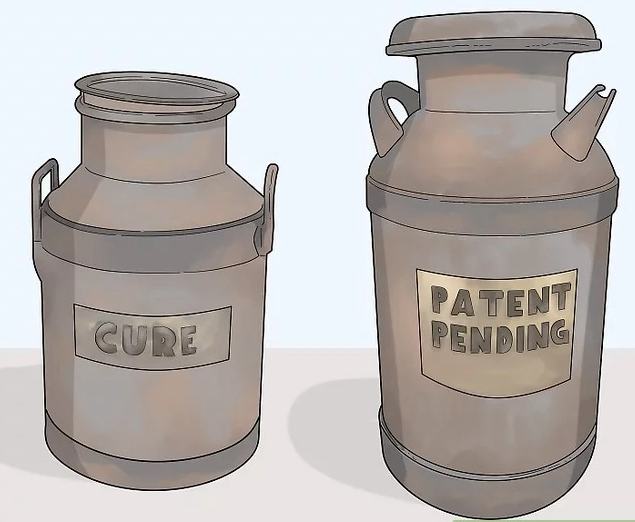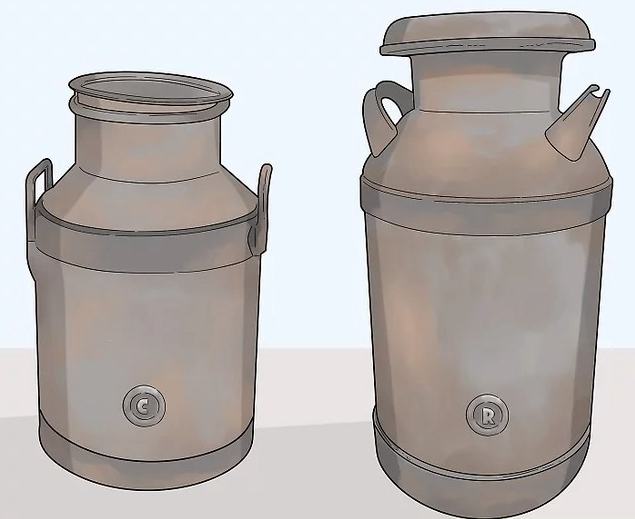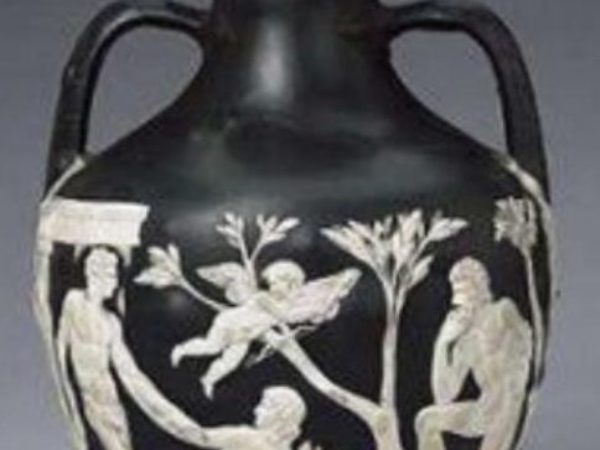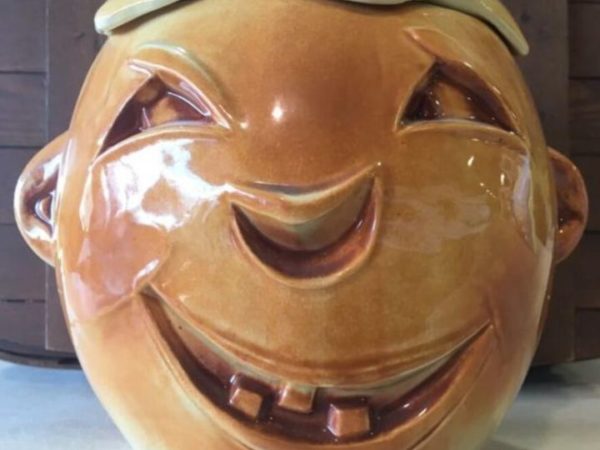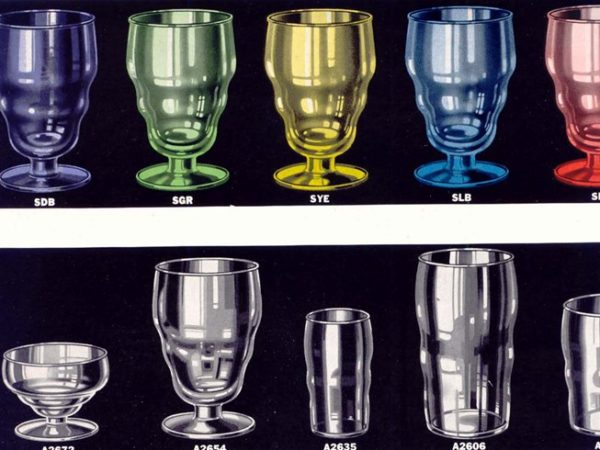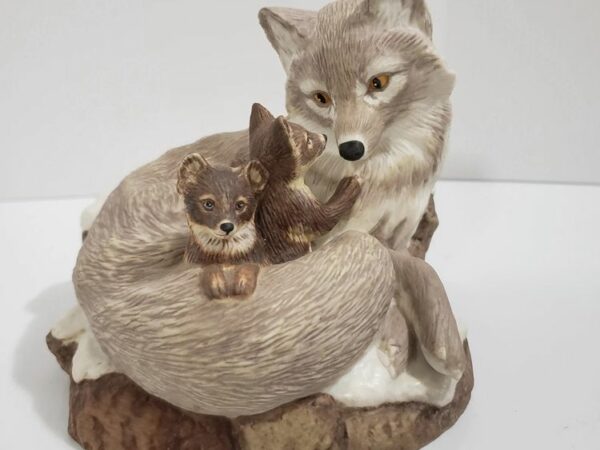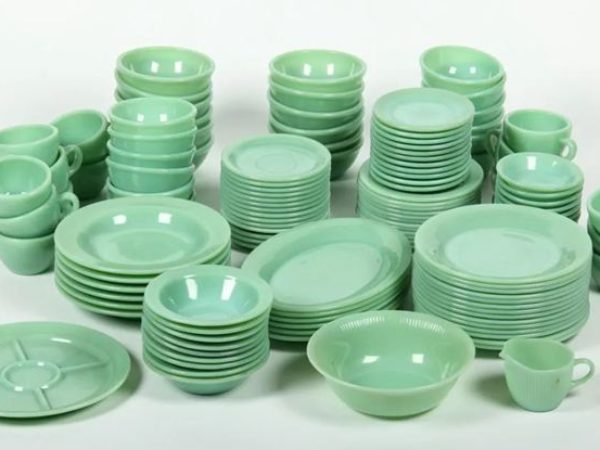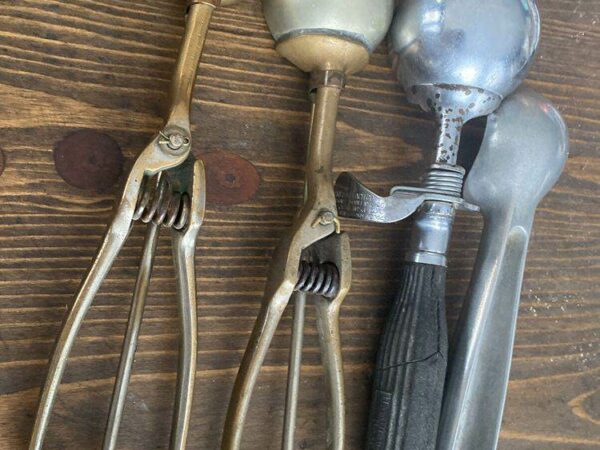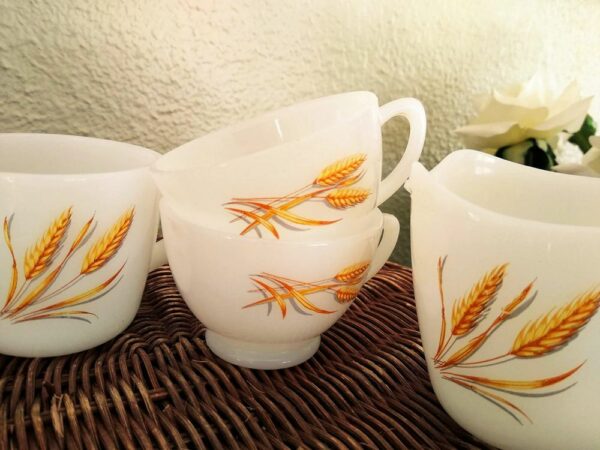The 19 century brought many changes to many countries, one of which was the usage of milk cans. Milk was an essential part of everyone’s diet and dairy farmers were eager to deliver. However, the farms were usually out of town, as such the delivery of milk necessitated the creation of milk cans.
Milk Cans are a dairy farmer’s transport mechanism for their fresh dairy products. Although milk cans became obsolete with the development of pasteurization, these dairy cans still retain collector value. However, their value as an antique is only matched by their value as childhood memoirs or contemporary decorations.
If you own some old Milk cans, you can use the methods described in this article to appraise their value. This guide also benefits Individuals that desire to collect antique milk cans or wish to purchase one as a decoration.
Table of Contents
History of Antique Milk Cans
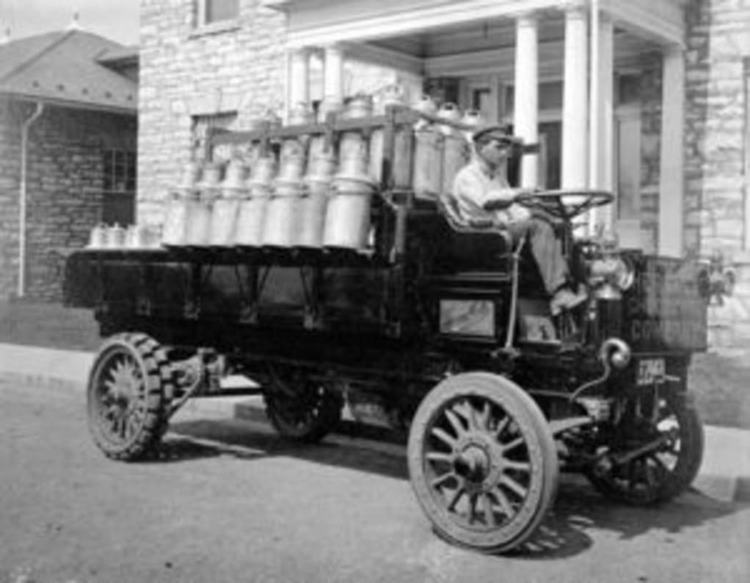
Milk cans are metallic containers, used to transport milk from a farm to the customers in town. They were also used to transport this diary product to cheese factories, dairy processors, and creameries. The usage of this container to transport milk didn’t start in the 21st century, as it’s far older than that.
One of the earliest versions of milk cans date back to 1000 years ago. In that period, you make milk cans by hammering metallic sheets together, just as you’d make a suit of armor. However, its design got updated as time went by, leading to the popular shape that you see as antiques today.
When farmers milk their cows, they collect the milk into a pail that’s placed under the cow’s udder. The collected milk is then heated up to kill all bacteria that are present. After which, it’s poured, while warm, into milk cans for transportation.
When the milk gets taken to the town, the customers would have to meet the farmer at a predetermined location. The customers come with a jar or container of some sort to collect their milk.
Individuals that want to collect high-quality milk need to come early. This is because the milk experiences some separation as time goes by. As such only those that come early can receive high-cream milk.
Manufacturers make the antique milk cans of today with various metals such as copper, tin, or even steel. It’s purported that the tapered shape works to prevent spillage, as farmers used their animal carts for transport. Later on, milk wagons and trains replaced the carts as the primary method of transport.
Although the milk can transport system changed a lot, it was not perfect. The milk sometimes soured before it got to the customer, and this occurs faster on hotter days. This is because the milk cans offered little insulation to the milk within.
Of course, you can use vegetable parchment and plug covers to properly insulate the milk. Unfortunately, these options are too costly for an average customer to acquire.
Sometimes, the container isn’t washed adequately leading to the presence of germs that contaminate the milk. Although the history of Antique Milk cans was one of constant development, it still came to an end. This occurred as refrigerated vehicles came along, making milk cans fall out of style since refrigeration preserved the milk better.
Methods for Determining the Ages of Antique Milk Cans
Collecting old milk cans is an art that most collectors are into. Since different creameries produce these antique milk cans, the names of the creameries are usually embossed on them. This makes it easier for enthusiasts to collect them, since they can group them according to their creamery.
There are also milk cans that have the farmer’s name written on a brass tag that’s placed on the can. Although various metals got used for milk cans in history, stainless steel cans are the most sanitary. This also makes up one of the reasons for which collectors value such milk cans.
Nevertheless, collectors still value old milk cans more. So, if you want to determine the age of your milk can, you can do so in two ways:
- You can examine the milk can itself
- You can examine the material used in making the milk can
Examining the Milk Can
If you are looking at the exterior appearance of the dairy can, a few factors can determine its age:
The Size of the Milk Can
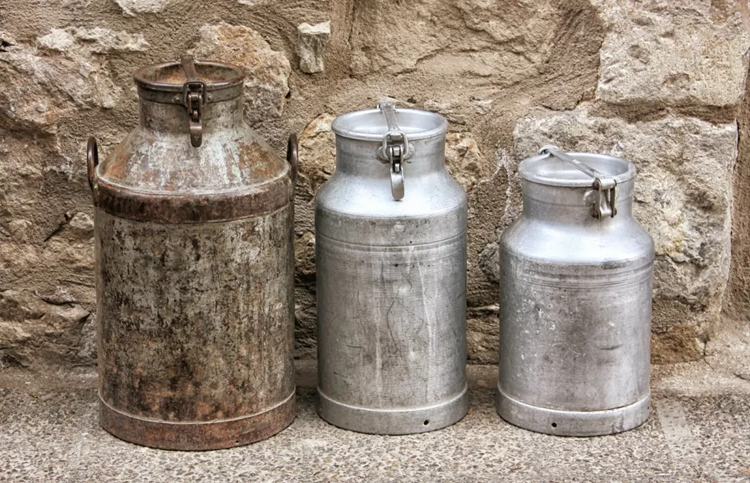
One of the biggest determinants of the age of a milk can is its size. There are small milk cans of 20 liters, larger ones of 40 liters, and even bigger ones of 90 liters. Milk drums are dairy containers that can hold up to 90 liters or 25 gallons of milk.
Milk drums were popular in the 19th century, while the smaller milk cans were popular in the 20th century. A large milk can is likely to have appeared before 1920. Although this doesn’t give an accurate indication of the age, it narrows it down.
The Company Label
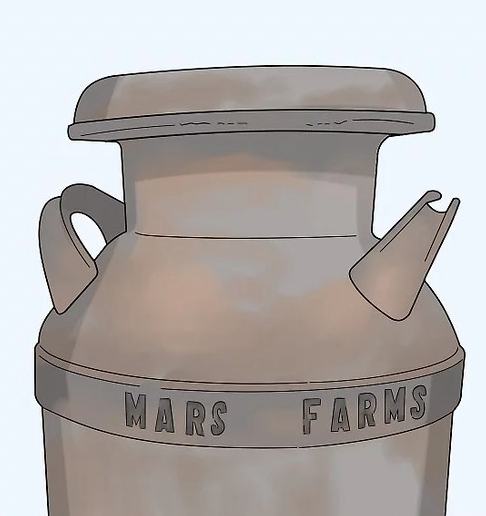
If you look around the milk can you might probably see some embossed letters or words printed on a bronze tag. These letters sometimes represented the identity of the company in question.
So, you can use these company names to determine the age of that can. This is because some companies or creameries were only active for an era. Hence, if your dairy cans bear their name, it probably came from when they were in business.
If you don’t find a name, you can also get a company logo as this also performs the same purpose. If you don’t feel like searching online, you can visit a good library to find the company with that logo.
The Number of Digits in the Label
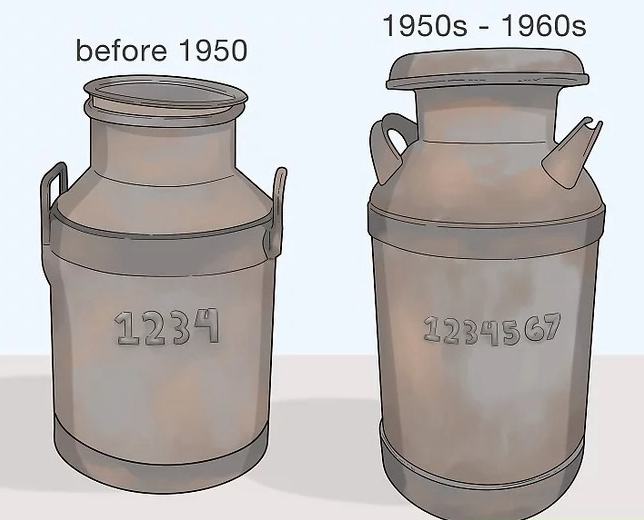
Most cans have a 2-digit or 4-digit number embossed somewhere on their person. This is the way company phone numbers appear on milk cans before 1950. Phone numbers in those days had no area codes, thus, they were much shorter.
So, if you have got such a short number on your milk can, it’s probably a phone number. This, in turn, indicates that your can got manufactured a year before 1950.
However, if the number on the can is a 5-digit to 7-digit number, it was probably made later than 1950. Accordingly, such a dairy can got manufctured between 1950 and the 1960s.
Copyright Years
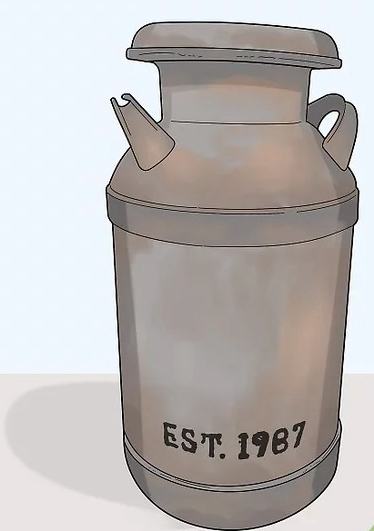
Some dairy cans carry their copyright years on their person. These copyright years are the periods in which that can got manufactured.
Unfortunately, you can’t trust all copyright years as some companies manufacture the cans earlier than that. Ultimately, these dates can only be guides to further narrow down your options.
Food Labelling Phrases
Before the 20th century, the law requires dairy companies to indicate certain phrases on their cans. These phrases changed over the years, hence, you can use them to figure out the age of a can. However, this method only works when you’re inspecting a can that got manufactured before the 20th century.
Some of these phrases include:
- Cure: This word on a label indicates that the milk can in question got manufactured before 1906.
- Hermetically Sealed: The dairy can in question got manufactured before the 1920s.
- Packed in Sanitary Cans: The milk can in question got manufactured before the 1920s.
- Salt Added: This means that the milk can got manufactured after 1920.
- Good Housekeeping Seal of Approval: This phrase indicates that the milk can got manufactured after 1910.
- Patent Pending: This indicates that the milk can got manufactured after 1940.
- Sugar Added: This means that the dairy can got manufactured after 1920.
Patent Numbers
Patent Numbers are a design that got introduced in 20th century milk cans, and you’ll see them on the can. Yet, just by themselves patent numbers cannot indicate the age of that can.
However, you can copy out a patent and check it out at the US Patent Office. Checking a patent number at the US Patent Office will tell you when that patent got registered. This, in turn, will give you an indication of the age of that can.
Copyright Labels
Milk can with copyright label, culled from wikiHow
A trademark for a milk can was equal to a copyright label at the time. As such, some cans hold some trademarks such as a circled ‘C’ or a circled ‘R’. These letters can help you determine the age of your dairy can since they were particular to some years.
The circled ‘C’ is one of the oldest known copyright labels, and it indicates milk cans made before 1914. However, some milk cans that got manufactured a few years later also used this copyright. The circled ‘R’, on the other hand, indicates a can that got manufactured in 1949 or later on.
Milk cans that got manufactured in Europe, in 1884 and later, also used ‘Rd’, ‘Registered’, or ‘Reg’ for their copyright.
Examining the Materials for the Milk Can
Observing the construction and constitution of a milk can is a great clue to determining its age. Some of these tells include:
The Presence of Soldered Metal on the Edge
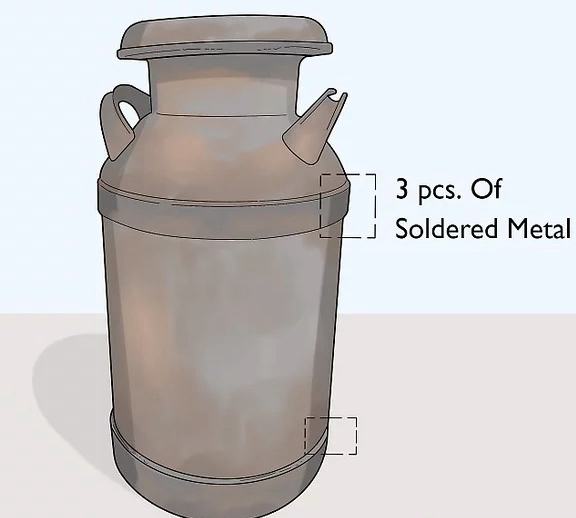
If you have noticed, there are antique milk cans with a band of soldered metals on their edges. This band of soldered metals is usually found at the top of the can and its bottom. Such milk cans were probably made in the 19th century or earlier.
If your milk can doesn’t have it, it was probably made in the 20th century. 20th-century milk cans had such physical grooves and marks discontinued. This is because people believed that such marks make a dairy can unsanitary.
The Thickness of the Can
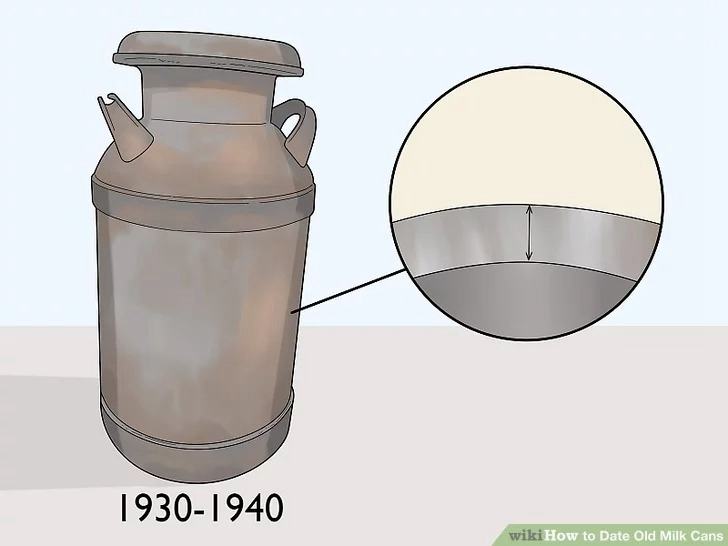
The construction and development of milk cans were continually updated throughout their use. As such, you’ll probably notice that some milk cans are very heavy, while others are lighter.
Older milk cans used primitive production methods, as such their materials were thicker. Such a milk can or milk churn was probably made in the 1930s or the 1940s. On the other hand, those that feel lighter got manufactured after 1950 and much later.
Besides the thickness of the can, you can also feel the thickness of the labels. Since the same principle applies here, the older cans of the 1930s and 1940s had thicker labels. Accordingly, the cans of the 1950s had much lighter labels.
The Presence of Thin Holes on the Cap
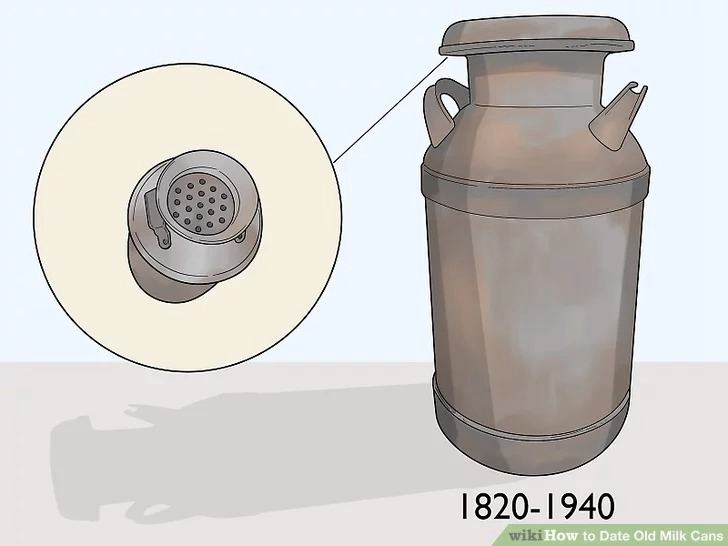
Milk churns that got manufactured between 1820 and 1940 have a few perforated holes at the top. These tiny holes disperses the steam that accumulates from the warm milk. Of course, modern milk cans lack these tiny holes since milk transportation technology has become more advanced.
Factors That Determine Antique Milk Cans Value
Collectors of antique milk cans are in various groups, with some collecting milk cans of a company. Others collect based on the region and those that collect based on the year. You could also say that the collection of a milk can is dependent on the collector himself.
Nevertheless, there are a few universally accepted factors that influence an antique milk can’s value. The factors that can give an idea of how much old milk cans are worth include:
The Physical State of the Milk Can
The physical state of a can matters the most when it comes to determining the price of vintage milk cans. As such, spotless cans cost more than those that look scratched or covered with dents. Such cans can cost as much as $200.
Unpainted milk cans also attract the interest of collectors. Many collectors attribute painting a milk can to marring history, as such, they would avoid such milk cans. So, a can that gets sold in its original state is going to cost more than a remodeled one.
The Type of Metal
Stainless steel milk cans represent perfection for milk containers. This is because manufacturers produced them as a solution to most of the problems that plagued older milk cans.
However, they are worth little to a collector as most collectors show more interest in antiques. As such, copper milk cans and other older (imperfect) milk cans are much loved more for their vintage value. Most copper milk cans get sold on eBay for more than $300, which gives an idea of their value.
Price of Vintage Milk Cans
It’s hard to put a number on an old milk can’s value. This is because in most cases the price of vintage milk cans gets decided on the whim of the buyer. If you want an answer to the question ‘what are old milk cans worth?’, you can check the list below.
- An antique Hershey Creamery embossed dairy milk canwith obvious scratches sold for $378 on eBay in 2022.
- An antique steel dairy milk jug with metal handlesthat’s painted black got sold for $184.99 on eBay in 2022.
- A pre-1930Arden Farms dairy milk jug got sold on eBay for $120 in 2022.
Ideas for Old Milk Cans
What do you do with an antique milk can after purchasing one? For many collectors, the best option is to clean them up and probably build a glass wall around them.
However, that’s not all a dairy can amount to. They can also be great decorations, capable of adding a bit of rustic class to a home. So, if you have got some old milk cans lying around, there are a couple of ways to use them.
Nevertheless, you’ll have to clean these milk cans before you can use them in your home. It’s only after restoring these milk cans that you can utilize them as decorative pieces.
If your cans are dirty, you can clean them with some water and soap. If they’re rusty, however, a steel brush or steel wool can remove the rust. You can remove stubborn rust by applying powder to it before using a steel brush or through sandblasting.
Nonetheless, you can go through the list below to get ideas for old milk cans:
As Cottage Decorations
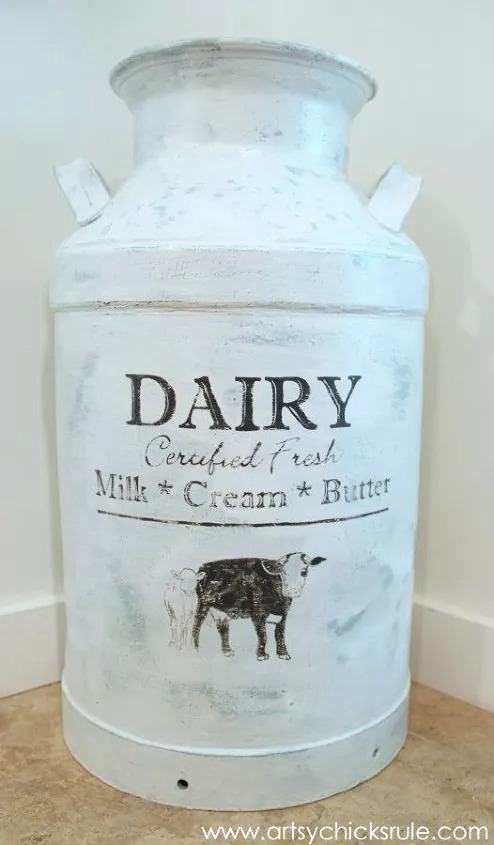
Antique dairy cans command a rustic presence which makes them perfect as decorations. They work great at drawing the attention of people to a beautiful area of your home.
As Tables on a Patio
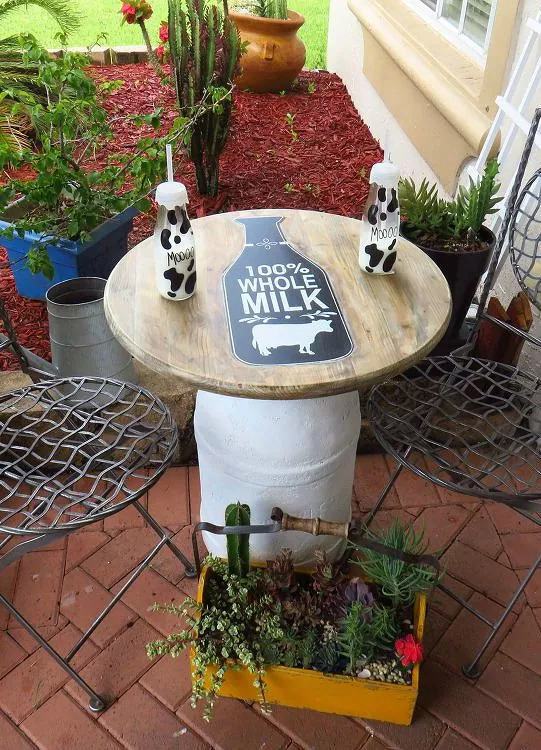
What do you think about the idea of using your old milk can as a tabletop? Of course, it wouldn’t look okay right away, but a few changes to its color scheme would make it perfect.
As a

This can be an update to a milk churn’s usage as a patio table. Since these cans look great in a garden, sticking an umbrella on top would only make them look better.
As a Planter
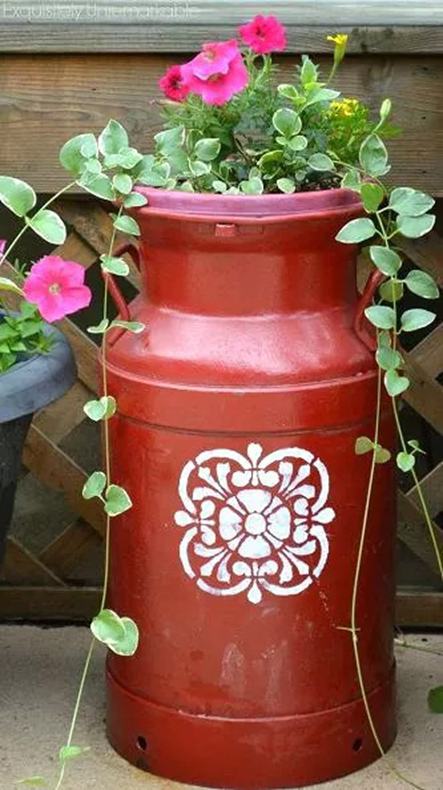
Why purchase antique vases or costly planters, when your antique milk can works fine? In fact, using your dairy cans add more character to your flowers, making them more visually appealing.
As a Side Table
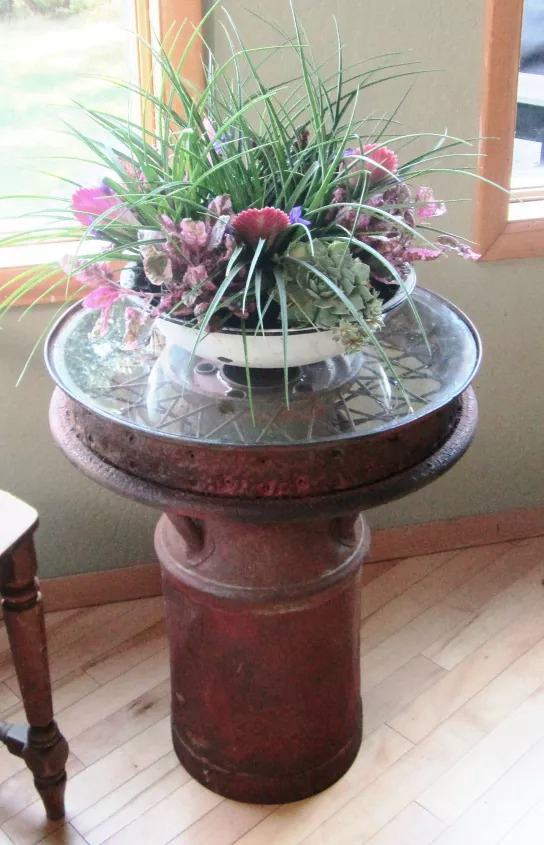
Besides its usage on a patio, antique diary cans can also work well in your home. You might need to set them up with the right color scheme and make a few changes to their structure. After which, your side table is good to go.
Where to Buy Old Milk Cans
If this article has ignited your passion for these antiques, you’re probably thinking about where to buy old milk cans? Well, there are many locations on the internet from which you can acquire antique milk cans, and they include:
- Collectors Weekly: Collectors Weekly is an online platform that hosts a wide variety of antiquated items.
- eBay: One of the most popular online marketplaces around, eBay is a great location to find antique milk churns.
- Etsy: Etsy is another good option for people that are looking to purchase genuine antique milk cans from their owners.
Final Thoughts
Although the methods for determining the age of milk cans are trustworthy, they’re not absolute. They just narrow down the probable range of options that you’ve got. Keep in mind that no method should be used in isolation, as they produce the best results when used together.
While their monetary and collector value is gratifying, old milk cans are perfect decoration pieces. Individuals who would appreciate contemporary decorations can use the ideas above to great effect.
